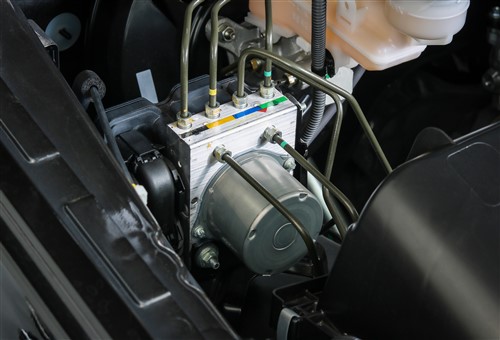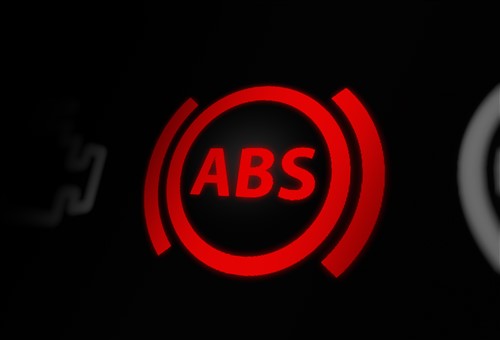
There was a time when hybrid drive train technology was regarded as a stop-gap technology that would fade away as electric vehicles replaced conventional internal combustion technologies, but things seem to have turned out differently. The pronounced global downturn in the uptake rate of electric vehicles means that hybrid drive train technologies will be with us for many more years if not a few decades.
We need not delve into the reasons why electric vehicle sales have slowed down to a crawl here, but suffice it to say that hybrid drive trains and regenerative braking systems will continue to develop and change rapidly to meet the much-anticipated introduction of the Euro 7 emissions regulations in July 2025.
In practice, though, it will be very difficult, if not impossible for manufacturers to build internal combustion engines that will meet the proposed Euro 7 emissions regulations, which incidentally, also include new limits on brake and tyre-related emissions. For the moment, though, we, as mechanics and technicians, have to deal with hybrid braking systems in their current state of development, and in this article, we will demystify the brake system on 2004 to 2009 Toyota Prius models. It is important to note that while the technical implementation of hybrid braking systems varies between manufacturers and even Toyota model ranges, the way hybrid braking is implemented on 2004 to 2009 Toyota Prius models is fairly representative of the way hybrid braking systems work in all series-parallel hybrid power trains. Before we get to specifics, though, let us look at-
Briefly, a series hybrid drive train consists of an internal combustion engine and one MG (motor/generator), and motive power can be split between the ICE engine and the MG under specified operating conditions.
In contrast, in series-parallel hybrid drive trains, such as is used in Prius and some Camry models, as well as in (among others) some KIA, Hyundai, and Honda models, the drive train consists of an internal combustion engine, and two motor/generators, usually labelled as MG 1 and MG 2. In these designs, one MG is connected to the engine via a clutch or other power-splitting mechanism to provide additional motive power, while the other MG is dedicated to generating regenerative braking forces under specified operating conditions. Moreover, in these designs, the internal combustion engine and both motor/generators can be coupled in various configurations to supply motive power.
In this context, specified operating conditions include the HV battery pack’s state of charge, the vehicle’s road speed, and the amount of braking force that is required. We will discuss these conditions in more detail later on in this article, but note that these conditions apply to all hybrid drive trains, regardless of their design or configuration, which brings us to the question of-

Since Prius (and most other hybrid vehicles) can apply the friction brakes autonomously under some conditions, the vehicle does not really need a conventional brake pedal. However, fearing consumer resistance if, for instance, the vehicle only had something like a pressure sensor in place of a regular brake pedal, Toyota spent a lot of time, effort, and money on devising ways to simulate the feel of the brake pedal on conventional vehicles.
In practice, Prius vehicles are fitted with fully functional brake master cylinders, piping and valving that can generate as much or as little friction braking as needed at any given moment. However, the single biggest difference between the hydraulic brake systems on a Prius and a conventional vehicle is that Prius brake systems incorporate an accumulator that is pressurized by the ABS pump to ensure a constant supply of pressurised brake fluid.
Additionally, the hydraulic brake system incorporates a device known as a stroke simulator. This device consists of a piston that acts on pressurized brake fluid and two springs with different compression rates. As a practical matter, the stroke simulator mimics some characteristics of the brake pedal feel on conventional hydraulic brake systems such as caliper flex, brake hose flexing, and brake pad/brake shoe movement as they take up clearances between themselves and the brake drums/rotors.
So, when a driver applies pressure on the brake pedal, the “pedal feel” is the same as it would be on a conventional vehicle, but depending on the HV battery’s state of charge and the vehicle’s speed, the pressure being applied to the brake pedal will not necessarily activate the friction brake system. Nonetheless, the pressure being applied to the brake pedal is an important input because it informs the ABS control module of how much braking is required, and based on this information the ABS control module will then use MG 2 to generate a magnetic field in its windings to slow the vehicle down.
This action is known as regenerative braking because MG 2 now operates as a generator that uses the vehicle's motion to generate a current to replenish the HV battery pack's energy. In cases where more braking force is required than MG2 can generate, or if the HV battery pack cannot accept the regenerative current for whatever reason, the ABS control module will activate the friction brakes using pressurised brake fluid drawn from the accumulator*.
* As a point of interest, it is worth noting that the pressure accumulator stores brake fluid under significantly higher pressures than a human driver in a conventional vehicle can achieve by applying pressure to a brake pedal.
Regenerative braking is highly efficient, and it is not uncommon to see Prius (and other) hybrids with severely rusted brake rotors and seized calipers as a result of not being used for extended periods. It is also common to see the original factory-fitted brake pads on Prius vehicles that are ten years old, and sometimes, even older.
Of course, all of the above assumes that the regenerative braking system is fully functional, which begs this question-

Although the hydraulic brake master cylinder is fully functional, it is isolated from the larger hydraulic brake system by a series of solenoid valves under operating conditions that a) allow the HV battery pack to accept regenerative braking currents, and b) do not require the application of the friction brakes.
However, since the brake master cylinder is fully functional, the solenoid valves that isolate it from the larger hydraulic brake system will open when the vehicle suffers a major loss of electrical power. This allows the driver to apply the friction brakes that will now work the same as on a conventional vehicle.
It is worth noting that the presence of trouble code C1300 – “ABS ECU Malfunction” can sometimes cause the regenerative braking system to stop working, but in most cases, this code sets when the 12V battery’s voltage drops to below a minimum allowable level. Therefore, it is critically important to obtain and check freeze frame data to confirm or eliminate low battery voltages when you are diagnosing a suspected ABS ECU failure or malfunction.
Moreover, typical issues like poor brake shoe adjustment, trapped air in the brake system, damaged flexible brake hoses, or excessive caliper flex can cause a difference between brake pedal feel when the vehicle is off, and when it is in Ready mode. Since these kinds of issues are typically not caused by failures or malfunctions in the regenerative braking system, the remedies for the above issues are the same as for similar issues in conventional brake systems. These include correcting brake shoe adjustment, bleeding the hydraulic brake system, replacing all flexible brake hoses, and resurfacing or replacing brake rotors and brake pads as required, which leaves us with-
In Part 2 of this article, we continue the discussion of Prius hybrid brake systems, but in this instalment, we will focus on how the brake system interprets and acts on input signals from the brake pedal.